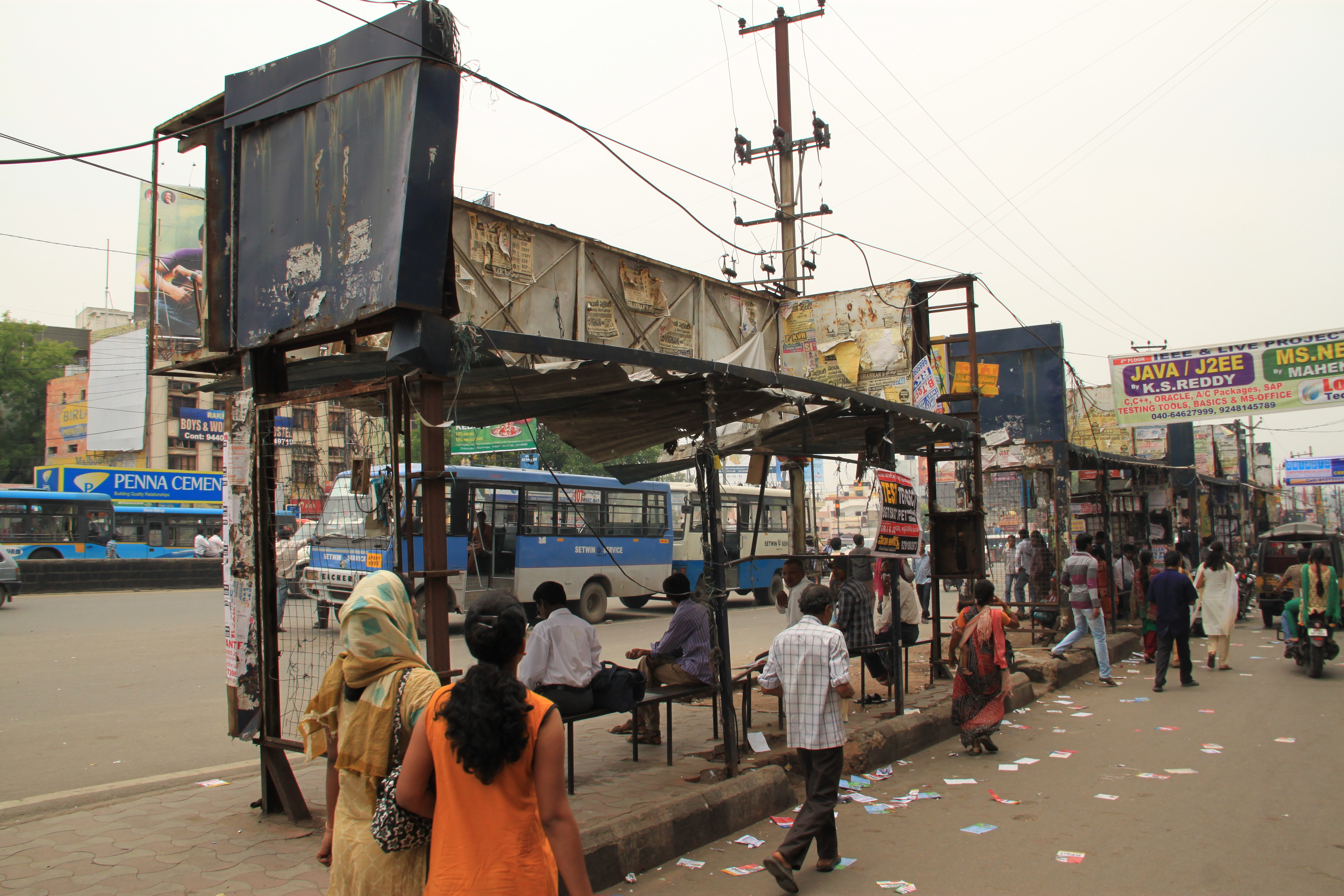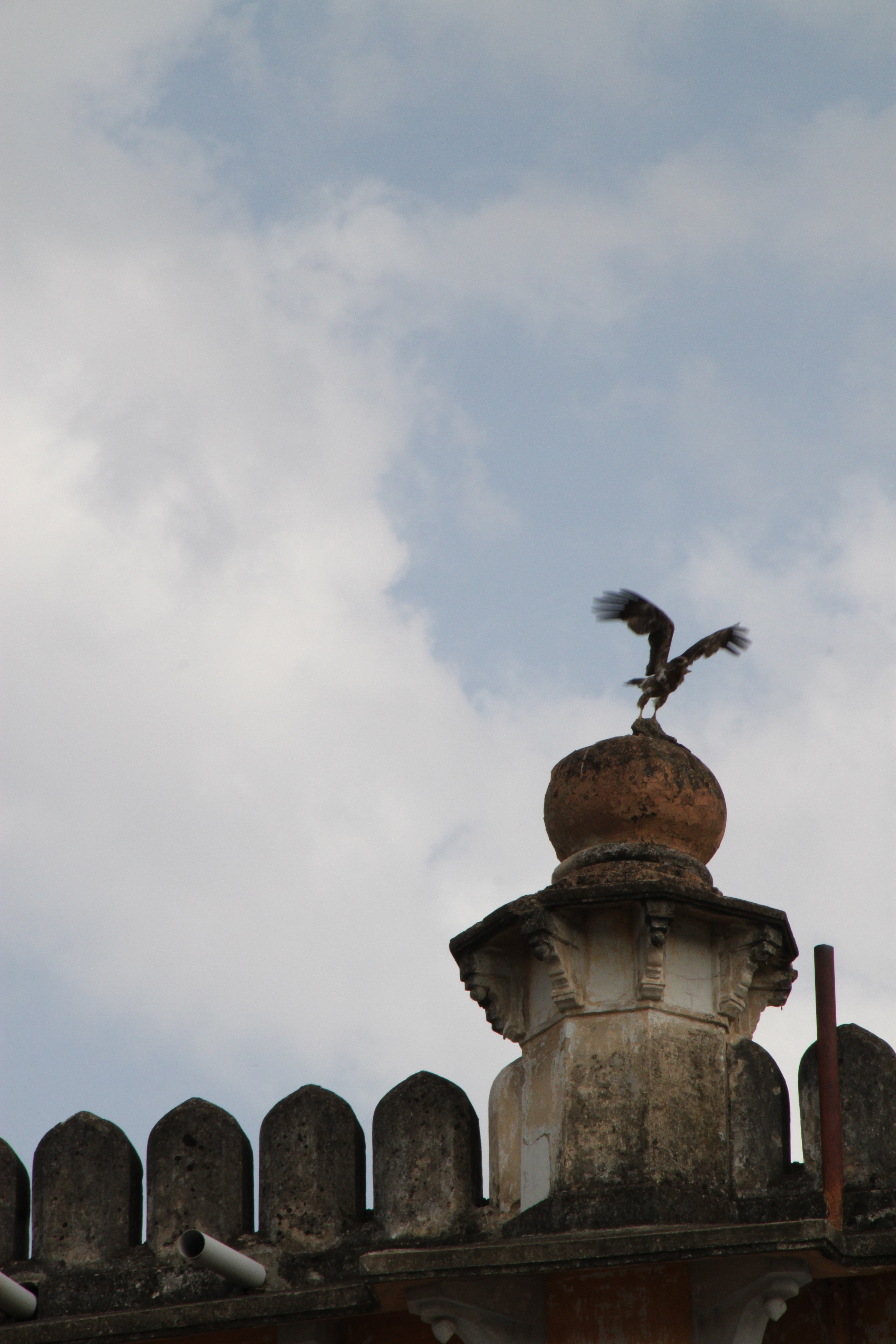
If you walk through the Dilsukhanagar neighborhood in Hyderabad, past vendors selling sugarcane juice and knock-off Nike baseball caps, it's hard to imagine that less than five months ago this was the scene of a terrorist attack which claimed the lives of 17 people and injured over 100. Today, life in this packed shopping district has returned to normal, and only a few chilling reminders—like the warped metal frame of the bus stop where one of the two bombs was detonated—remain of the violence and terror of February 12, 2013. There is no memorial, no shrine, nothing to tell the casual passer-by what happened here.
With violent riots by the Telenanga separatist movement, attacks by the Naxals (leftist radicals who enlist child soldiers), and bombings by terrorist groups featuring in the headlines on an almost daily basis, it's unsurprising that there is no memorial site of the Dilsukhanagar bombing. In an area where senseless violence is relatively common, many people see forgetfulness as a survival mechanism.
More shocking is the government's forgetfulness of the promises it made in the aftermath of the bombing. When media attention uncovered the shortage of equipment at Osmania General Hospital, where many of the victims of the blast were transported, the government promised to repair the most glaring shortcomings. Kondru Murali, the Minister for Medical Education, promised the former superintendent of Osmania, Dr. Gopal Kishan, that the emergency department would be "modernized by June 2013," but to date nothing substantive has been done.
After the bombings, when the media firestorm was at its height, Dr. Kishan and five other former high-ranking members of the Andhra Pradesh state medical administration investigated Osmania to discover what went wrong, sending their findings in a report to the Chief Minister. Their report, often underlined, in bold print, or capitalized, communicates the frustration that even high-ranking government employees feel in the face of the state's treatment of public hospitals. It tells a story of government apathy, popular prejudice against public hospitals, and the heroic efforts of the hospital's doctors and staff in difficult conditions.
19:00 to 21:00
Only a skeleton crew was on duty in the out-patient building to deal with emergency cases, as usual in Osmania during the evening. The Resident Medical Officer (RMO) saw the panicked first broadcasts about the bomb blast on TV. Osmania is only four miles from Dilsukhanagar, making it the closest government hospital. Realizing that the injured would be arriving at any moment, the RMO sent orderlies to get all available stretchers and alerted the staff to prepare the operating theaters. Some wards which should have been ready two months before were still unusable, but the staff improvised enough beds for the injured.
Meanwhile, over 100 doctors and staff who were off duty rushed to the hospital after seeing news of the blast. By 19:15, the first of forty-two patients, a twenty-two-year-old, arrived. Many of the patients had severe head trauma, but the CT scan machine, which was supposed to have been repaired months ago, was still out of order.
The doctors do what Osmania doctors were often forced to do: they improvised with what little equipment was available, and they managed to stabilize most of the patients. According to a senior doctor quoted in the Times of India, doctors and relatives of patients pooled money to buy life-saving drugs as they were needed. Only one patient died on the operating table during the night.
21:00 onward
At this point, the report calmly states, "things went out of order."
Thousands of people swarmed the outside of the hospital. Media crews eager for interviews with survivors, opposition politicians and their supporters hoping to benefit politically from the tragedy, and frantic relatives of the injured all clamored to get inside. The police cordon wasn't enough to hold them back, the crowd surged into the hospital, and the treatment areas were overrun.
Many of the family members of the injured had seen news broadcasts stating that the government was willing to pay for treatment of the injured at corporate hospitals. Seeing the conditions in the operating theaters at Osmania—the rusted operating tables, the flickering lights, the peeling ceiling plaster—some of them decided to take matters into their own hands.
Without the consent of hospital authorities, they wheeled their injured friends and family members down to ambulances from private hospitals, which were waiting outside. Transporting patients in critical condition was risky, but better than leaving them to the medieval operating theaters of Osmania. Over twenty patients were transferred in this way.
Some sources allege that the government itself had the patients moved. "The government decided to shift many patients to private hospitals to save its skin," said a senior doctor quoted in the Times.
The Aftermath
Between the evening of the blast and the day that the last patient was sent home, no government ministers visited the injured in the hospital. According to Dr. K. Aditya, a former resident at the hospital, the Director of Medical Education, Dr. Vishnu Prasad, visited weeks after the last patient had left, and simply said, "I am here to see the dead bodies."
"The callousness of the state government" is the main reason for the current state of Osmania, says Dr. Kishan.
Soon word got out that patients had been transported from Osmania to private hospitals. The public was outraged. Forty-two patients should have been within the capabilities of the largest government hospital in the state. During the 1990s separatist riots, the hospital regularly dealt with over a hundred critical patients per day, says Dr. Kishan, with only 2 percent mortality.
Kishan's report summed up the change that has taken place in the last two decades: "this hospital which once enjoyed highest [sic] reputation in the entire state is now tottering and in shambles due to poor support from the government."
The reasons behind the downfall of Osmania are many, but the report singles out one in particular. There are shortages of necessary equipment and staff, it says, but the only thing there is no shortage of in Osmania is government agencies. Any effort to renovate the hospital is hamstrung because it must be approved by a slew of agencies, each approval taking weeks or months. Repairs must go through the PWD, equipment procurement must go through the APMSIDC, appointment of doctors must go through the DME. The CT scanner which could have saved lives the night of the bombing was out of order because a request for repairs had been stuck in the AMSIDC for over two months.
The agencies are often accused of corruption, but even if they are clean, getting approval for requests from public hospitals takes time. The offices of the Directorate of Medical Education (DME) are daily flooded with requests for equipment from every corner of Andhra Pradesh, a state with a population close to that of California. Stacks of urgent request forms tower over the desk of the director of the DME.
Dr. Kishan wants to cut the Gordian knot of government agencies, and make Osmania responsible for its own repairs and equipment procurement. He is one of only a few voices demanding change. Most doctors, he alleges, don't complain because of a fear of being transferred. "But I am not scared of anyone," he says.
Osmania has few advocates as fearless as Dr. Kishan, and even fewer with his level of influence. But even his best efforts to lobby for change in the aftermath of the Dilsukhanagar bombings have had little effect. The ancient operating tables in Osmania are still in use. The drug cabinets are still half empty. And, somewhere in the endless stacks of paperwork in the APMSIDC, there is still a request for repairs for Osmania's broken CT scanner.
This piece was published in partnership with the Pulitzer Center on Crisis Reporting.
(Post updated at 7:20 p.m. on July 15, 2013.)






